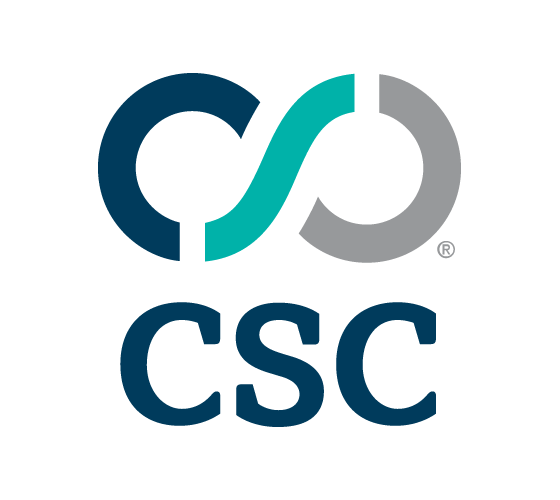


|
||
|
||
The ICANN Board’s recent resolution to suspend an accountability safeguard hardcoded in its bylaws may represent the final straw that breaks the community’s trust in ICANN. Most community members, including its own Board Chair, acknowledge that its current policy development and implementation processes are not working efficiently. However, the Board’s decision to suspend the mechanism that could address these inefficiencies only seeks to preserve the status quo and the economic interests of these dominant market participants. The net result of this action is sending the organization careening down a slippery slope of becoming a glorified trade association with a veneer of multistakeholderism.
The Accountability and Transparency Review Team (ATRT) is an essential safeguard in ICANN governance to ensure that the organization’s “decision-making reflect[s] the public interest and are accountable to the Internet community.” Originally part of the 2009 Affirmation of Commitments (AoC) between ICANN and the US Department of Commerce, the ATRT was hardcoded into the ICANN bylaws with the full support of the ICANN community as part of the Obama administration’s transition of IANA functions to ICANN in 2016.
While ICANN commenced the third ATRT in December 2018, it has failed to commence the fourth ATRT (ATRT4) in violation of the bylaws since December 2023. In April 2024, the ICANN Board passed a resolution deferring ATRT4 “for a limited time not to exceed twelve months.” In May 2025, the ICANN Board continued the deferral of ATRT4 in violation of the bylaws while it worked to design a new review program fit for purpose. The May 2025 resolution by the ICANN Board is not only a continued violation of its bylaws but a total repudiation of the consensus the community reached as part of the IANA transition a mere nine years ago.
ICANN’s inefficiency in developing and implementing policy, particularly regarding generic top-level domains (gTLDs) is no secret. In fact, national governments have now been enacting relevant domain name regulations faster than ICANN, as evidenced by the European Union’s Network and Information Security (NIS 2.0) Directive. However, that was not always the case. The Uniform Domain-Name Dispute Resolution Policy (UDRP) is widely acknowledged as ICANN’s most successful consensus policy. This policy work was initiated in May 1999, approved by the ICANN Board in October 1999, and the World Intellectual Property Organization (WIPO) rendered its first decision in January 2000, nine months from conception to implementation.
In May 1999, ICANN also commenced a policy development process to introduce new gTLDs into the root zone. In July 2000, the ICANN Board approved the new policy, and ICANN began accepting applications in August 2000. The ICANN Board selected the first seven new gTLDs in November 2000, 18 months from conception to implementation. ICANN’s second round of new gTLDs commenced in 2004, and the third in 2012. However, it will likely be fourteen years between gTLD rounds if ICANN sticks to its current Q2 2026 launch date.
Sadly, this is par for the course in connection with several other ICANN policy initiatives, most notably the privacy proxy initiative, which launched in October 2013 and has languished for over a decade. However, the biggest testament to ICANN’s inefficiency is the topic of registrant data accuracy, which has been hotly debated since ICANN’s incorporation. In over twenty-five years, the ICANN community has failed even to reach consensus on the definition of “accuracy.”
Some in the ICANN community attempt to discount this irrefutable evidence by pointing to simpler times, when ICANN had fewer formal policy requirements and fewer participants. However, as detailed below, this claim does not hold up under scrutiny when you look at the composition of who is currently participating in ICANN’s policy development process.
While ICANN’s bylaws and policy development documentation have grown more voluminous over the years, sadly, the number of non-reimbursed community stakeholders engaged in ICANN and the policy development process has been declining. Amazingly, ICANN was able to achieve several of its initial consensus policy successes with a staff headcount numbering in the single digits, with a low single-digit million-dollar budget to match. These initial efforts were largely possible from a diverse and largely volunteer community vested in the ICANN multistakeholder model working. Today, ICANN is flush with over a hundred and fifty million dollars in annual revenue, a highly paid staff of approximately 400, and manages over half a billion in financial reserves (operational cash and new gTLD funds).
One of the most significant changes within ICANN over the years has been the number of stakeholders that ICANN financially reimburses to attend ICANN meetings. In many instances, the stakeholders receiving this reimbursement must engage in policy development and other administrative activities at these meetings as well as inter-sessionally. On average, there are approximately 225-250 ICANN community members who are reimbursed to attend and participate at each ICANN meeting, e.g. airfare, hotel, and daily per diem. This is on top of the approximately 120 ICANN Board and reimbursed staff, but does not include ICANN’s consultants/advisors who also attend. This means that approximately 25% of all in-person attendees at an ICANN meeting are being reimbursed by ICANN. As a Wall Street Journal article once noted, ICANN is “Club Med for Geeks.”
Sadly, despite ICANN reimbursing all these stakeholders to attend ICANN meetings in person, the numbers show that most attendees are not in the rooms contributing to the policy development process. According to ICANN’s By the Numbers report, there were 1,369 in-person attendees at ICANN82. The most well-attended session was the opening ceremony, with 582 attendees. However, the average number of attendees across all sessions was only 57. Given that the average number of concurrent sessions per time slot at ICANN82 was 8, approximately 450 attendees were engaged in conference activities. So were the other 900 in-person attendees?
The answer to that question can be found in the statistics ICANN used to publish. Before ICANN67, ICANN included a breakdown of the stakeholder classification in the By the Numbers reports. However, an alarming trend emerged between ICANN55 and ICANN66. At ICANN55, 17% of the ICANN participants identified themselves as being from the domain sector. However, at ICANN66, 39% of the ICANN participants identified themselves as being from the domain sector, an all-time high. The not-so-hidden secret is that most attendees at an ICANN meeting are not there to engage in public policy development but to engage in business development, which happens in the countless side meetings and hallway discussions.
Despite potential abuses of the ICANN-funded traveler program, its support of stakeholders from ALAC and the GAC has been a vital resource for enabling participation in these advisory committees, which have served as an essential check and balance in the commercial interests of the contracting parties. It is also interesting to note that despite the private sector-led nature of ICANN, GAC sessions are always some of the most well-attended sessions at the ICANN regional meeting. In fact, at ICANN82, eleven out of the top twenty-five sessions involved the GAC.
The gTLD registrars and registries, as well as the ccTLD registries, have been some of the more vocal advocates supporting the ICANN Board’s decision to suspend ATRT4 and engage in an ad hoc review process. This begs the question—why? The answer potentially lies in connection with the last time ICANN underwent a holistic review. Before ICANN’s Evolution and Reform process, which began in 2002, there was no Generic Supporting Organization or Country Code Supporting Organization. There was only a Domain Name Supporting Organization (DNSO) in which gTLD registrars, gTLD registries, and ccTLD registries were three of seven constituencies.
As a result of the ICANN Evolution and Reform process, gTLD registrars, gTLD registries, and ccTLD registries gained the most power. The ccTLDs obtained a dedicated Supporting Organization, empowering it to place two directors directly on the ICANN Board. A new Generic Names Supporting Organization (GNSO) was created to replace the DNSO. Over the years, the bicameral structure of the GNSO and amended bylaws provisions regarding voting have essentially given gTLD contracting parties (when aligned) a de facto veto over any policy that might negatively impact their business operations.]This effective veto is in addition to the additional “picket fence” safeguards that contracting parties have in the ICANN bylaws and their agreements with ICANN.
This dynamic also helps shed light on why some GNSO policy initiatives, like privacy and proxy registration services, and data accuracy, have withered and died within the GNSO over the past decade. These safeguards that businesses, cybersecurity researchers, intellectual property owners, and law enforcement have been advocating for years are simply an additional cost to doing business that they have no interest in adopting.
It is no wonder that these commercial actors have no interest in undertaking a holistic review of the ICANN ecosystem. In almost every scenario, they would lose power. So, maintaining the status quo is in their economic and strategic best interest. Before the IANA transition, businesses, IP owners, and law enforcement could rely upon the leadership of the US National Telecommunications and Information Administration (NTIA) to ensure that their interests were adequately protected. However, since the Obama administration’s transition of IANA functions to ICANN in 2016, there is no practical way for these voices to be heard with the de facto veto that the gTLD contracting parties have within the GNSO. Their only alternative is to resort to national legislatures, as happened in connection with NIS 2.0. The net result of this downward spiral is clear: the death of the ICANN bottom-up multistakeholder model as we know it.
Sponsored byRadix

Sponsored byVerisign

Sponsored byWhoisXML API

Sponsored byCSC

Sponsored byDNIB.com

Sponsored byIPv4.Global

Sponsored byVerisign

You make some great points about the growing sluggishness of ICANN’s policy development processes, the organizational bloat, and the subsidization of attendance. I also agree that ICANN should not be ignoring or deferring fundamental by-law requirements. But it is not clear to me where your critique leads. Insofar as I can determine a direction, it seems that you are arguing for strengthening particular stakeholders, primarily IPCC and law enforcement. I am also disturbed by your suggestion that the IANA Transition should not have happened. My book, “Declaring Independence in Cyberspace” documents in great detail just how bad accountability was before the transition, and shows that the U.S. government role was largely responsible for ICANN’s underdeveloped accountability. Everyone knew that the real final decision making authority was the USG, so they lobbied the government and GAC and didn’t take ICANN’s organic processes seriously.
Let’s take the ATRT first. True, it’s really bad that the board thinks it can just ignore a bylaw requirement. But you must understand that the ATRT, and the absurd “Affirmation of Commitments” from which it sprang, were expensive and time-consuming processes that did not really create accountability (read my new book for an explanation of how ATRT committees simply reproduce the existing power structure of ICANN) ATRTs, which preceded the 2016 reforms, served as a way of side-stepping real accountability. The IANA transition and accompanying bylaw reforms, specifically the Empowered Community, the IRP reforms, and the new mission statement, are the real accountability measures. I think the board recognizes that ATRT, like the endless rounds of other reviews, is neither an effective nor an efficient way of keeping ICANN accountable. You can’t complain about staff bloat and glacial processes and also believe that ICANN should continue running holistic review processes that consume massive amounts of staff and stakeholder time and produce little results. The board should be honest and propose to change this bylaw, not ignore or defer it.
You say ICANN is becoming a “trade association” as if that were entirely a bad thing. But ICANN was initially created to be a form of “private sector self-governance” (read the white paper) in which the stakeholders in the industry, with representation from business and noncommercial users and advice from governments, formed consensus policies. The regime imposes all kinds of costs and regulations on the DNS industry. Some policy proposals don’t win the level of consensus support they need. If ICANN was really just a trade assn, why does it take 10 years to put together a new TLD process and why is the applicant guidebook 700-800 pages? It’s because non-industry stakeholders, notably IPCC and GAC, want to attach so many commitments and regulations to the simple award of a TLD.
Please realize that IPCC - and the “cybersecurity researchers” they hire - are just another industry. So your complaint about the veto power of the DNS industry rings hollow. If IPCC is not getting what it wants from ICANN policies, it will have to do a better job making compromises with other stakeholders to build a coalition needed to pass policies. You are absolutely right that these processes should not be dragging on for 10-15 years, but we also need to accept the fact that if there’s no consensus there is not supposed to be a policy at all, so let’s just end these things.
And thanks for calling out the way ICANN subsidizes participation. That needs to change.
Milton,
Thanks for the constructive feedback. I am glad that we agree on several points. Regarding our points of divergence allow me to address them in the order that you raised them.
Balance of Power
We agree that before the transition, the USG via the IANA Contract had a tremendous amount of power, and many stakeholders lobbied them directly to get what they wanted. My concern is that I believe that the pendulum has swung too far in the other direction and contracting parties (registries and registrars) have an essential de facto veto over any GNSO policy that negatively impacts their financial bottom line.
One of the reasons I was in favor of a holistic review of ICANN is that a lot has changed since the last ICANN evolution and reform in 2002 and it would be a good idea to understand the new stakeholders within the ICANN community. Until we know all the stakeholder groups and their respective representativeness, it would be premature to propose increasing or decreasing any existing or future stakeholder group.
IANA Transition
I must admit that I am conflicted about the IANA transition. On one hand, it was the common goal that you, myself, and many others invested substantial blood, sweat, and tears trying to achieve over the years. However, as a lawyer, I have a growing concern that this transition was inconsistent with US law. I think the States that filed an injunction in Texas back in 2016 trying to block the IANA transition made a very valid legal claim regarding the unconstitutionality of transferring US property without an act of Congress. While the court denied the injunction and restraining order it never ruled on the underlying merits.
However, the bigger change was the Supreme Court Loper decision which overturned the Chevron precedent. Under Chevron, courts would have likely upheld the decision of NTIA letting the IANA Contract lapse and the associated intangible property convey to ICANN. However, under Loper, I think the current conservative composition of the Supreme Court would likely find that NTIA exceeded its authority back in 2016.
ATRT Review Process
The fact that the community embraced the ATRT process and enshrined it into the ICANN Bylaws as part of the transition should not be easily dismissed because the process is complicated and/or expensive. Do you not find it a bit ironic that the Board is saying this process is not fit for purpose less 9 years after being incorporated into the bylaws, but it has been over 20 years since there has been a holistic review of the ICANN structure and constituent bodies?
Trade Association
It has been some time, but yes I did read the Green Paper and the White Paper. I also read the ICANN articles of incorporation which state that ICANN shall “pursue the charitable and public purposes of lessening the burdens of government and promoting the global public interest.” This is why I have personally viewed ICANN as more of a private-public partnership.
We are also in agreement that not every policy initiative taken up within ICANN needs to result in a consensus policy. Where we may disagree is that in the case of ICANN failing to implement the policy because of a lack of consensus, I believe that governments are then free to act to address that problem in the national law. Unfortunately, I believe some in the ICANN community feel that if ICANN cannot reach consensus on a policy then governments should not take action.
I also want to push back on the delay of the next round of new gTLD as evidence that ICANN is not a trade association. The Registries from 2012 were in no rush for the next round as that provided these existing registry operators more of a window to attract customers. Look at the zone files of .BIZ and .INFO which declined after new gTLD were introduced into the Root. With the addition of new gTLD in 2027, most incumbent TLDs from 2012 will likely decline.
Best regards,
Michael